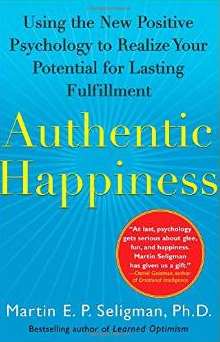
For the last several months I’ve really shifted my view about food. I see it as medicine. Not that I don’t enjoy it, but I see what I eat as either making me more healthy, or less. I see what I eat as being almost as important to my health as my insulin.
Now that doesn’t mean I have a perfect diet. But it does mean I’m more motivated to eat foods that are nourishing me — infusing me with healthy anti-oxidants and strengthening my overall body and fitness, rather than degrading it, or setting me up for the side effects of unhealthy eating – heart disease, overweight, guilt and personal frustration with myself.
So I wanted to share this great article from Men’s Health magazine giving their take on the 40 Best Age-Erasing Superfoods.
My healthy eating, and by this I mean smaller portions and eating mostly vegetables, fruit, beans and lean protein, automatically maintains my weight. I’m trimmer these last several years than I’ve ever been, and without trying. Healthy eating also gives my psyche a reason to feel pretty good about myself every day instead of guilty and frustrated. But you got that already, didn’t you?
And so you know I’m not just blowing smoke, it’s reflected in the blood tests I get twice yearly: A1C 5.7%, LDL (lousy) cholesterol 108, some would say a little high, yes, it’s in the family, but my HDL (good) cholesterol is an astronomical 107, triglycerides 50 mg/dl, blood pressure 90/60 and a heart Al Pacino would say is “Strong like bull.”
If you’re curious what I typically eat here’s my day food-wise:
Breakfast – a bowl of steel cut oats, I cook, to which I add: flax seeds, sunflower seeds and fruit, and then top with a spoonful of non-fat Greek yogurt, non-fat cottage cheese, and a spoonful or peanut or almond butter. I can’t tell you how much I like this – it’s creamy, crunchy, sweet and delicious. I could eat it for every meal. Maybe having a breakfast I love and knowing I get to eat it every morning, helps me stick to my healthy eating throughout the day; I know a reward is coming tomorrow morning.
Lunch – usually left over veggies from last night’s dinner, or a spinach salad, with some feta cheese or a slice of turkey and some beans. I may add avocado or cooked squash depending upon what’s in the house. If I eat lunch out it’s usually a spinach feta omelette with one slice of whole grain toast. No butter. Olive oil, herbs and mustard are my main taste-boosters. Butter, mayonnaise, bottled salad dressing and such I don’t use anymore.
Dinner – usually fish or chicken grilled, broiled or sauteed with a mix of veggies and beans. Snacks are usually nuts, particularly walnuts (yes, they have fat, healthy fat which you need, just don’t eat too many), veggies, less sugary fruits like berries, melon, peaches and after dinner usually some dark chocolate.
Now you’re thinking I must be a monk, or a martyr, keeping to such an austere meal plan. I know you think that, people have said it to me. But neither is true. It’s just that over the years, particularly after reading Bernstein’s book, Diabetes Solution, I’ve rid most of the refined carbs from my diet knowing how much they made my blood sugar swing from high to low; it was awful. Now I have tons more control. And feel better. And, to be honest, while rapid-acting insulin and pumps give us more spontaneity, routine as in eating similarly day to day, makes my blood sugar more predictable.
I’ve also lost my taste for most sweet and fatty foods. It happens when you begin to eat “real food” again. I’m a big fan of Michael Pollans, Food Rules. I follow his mantra: Eat food, mostly plants, not too much.
That said, I’m not a vegetarian and I’m not a zealot. Fried calamari, the occasional slice of cheese or flourless chocolate cake, crusty bread and olive oil, anything friends make for dinner and eating everything in my house – everything – those occasional nights when the world tips out of balance also co-exist with my healthy eating. Oh, yes, so does wine with dinner. Another reward. Thank goodness years ago some French marketing guy said it was healthy.
So, check out this list of 40 Superfoods and try to put more of them in your diet. And, if you’ve tried to eat healthy before only to have given up, perhaps this is the day it will take. Here are a few tips that may help:
1. Decide why being healthy is important to you – only to you – and keep that front and center
2. Fill your house with healthy foods and throw out the junk. If when you’re hungry you can reach for a carrot instead of pretzels, you will.
3. The day you fall off the wagon, is only a day. Start new the next day. What you do in a week counts more than what you do in a day.
4. Your history doesn’t have to be your future. Ever.
5. Honor yourself enough to make healthy eating important, and your mission.
6. Know that in a few weeks, your tastebuds will change. You will lose your taste for synthetic food, sweets, salt and grease.
7. Talk yourself through a weak moment. Tell yourself if you’re dying for that piece of cake at 10 PM, you can wait till morning.
8. Nothing’s off limits. If you need it, eat a little of it. Parcel it out onto a plate, don’t stand over it in the kitchen. You won’t stop.
9. Go slow or cold turkey. Whatever works for you.
10. Remember, you can do it – millions do. It may take time, but depending upon what you do now, next year you’ll either be exactly where you are now, less healthy or healthier.





